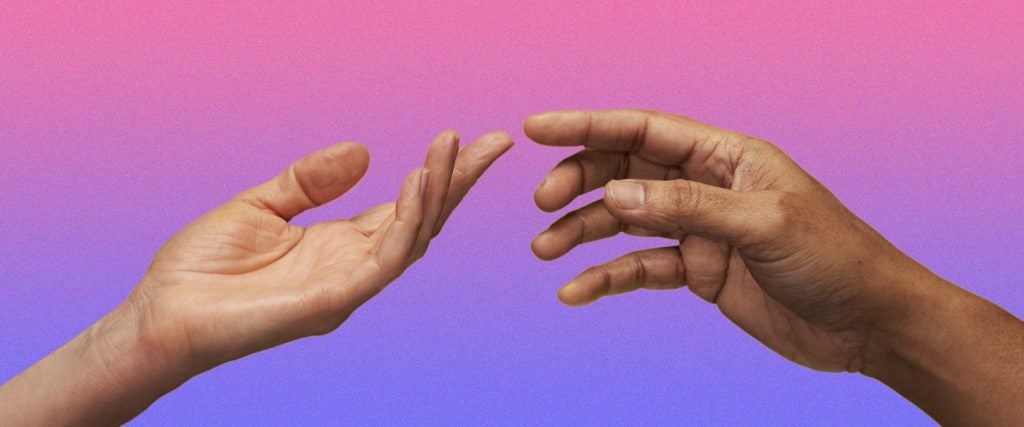Lee, a non-binary teenager in British Colomubia, doesn’t remember being hugged or receiving much physical affection from their conservative Mennonite parents growing up. But when they entered adolescence and started to crave that contact, attempts to receive it were often met with shame. “If I hugged friends around my parents, they wouldn’t approve of it,” Lee tells me. “People say your love language is what you’re deprived of most as a child, and I absolutely agree.”
Over the course of the pandemic, Lee, who is immunocompromised and spent a lot of time isolating, started to crave being touched even more intensely — an experience a growing number of experts refer to as “skin hunger,” which isn’t a technical diagnosis but one meant to capture the growing number of people who feel, as Lee describes it, “like you’re living from hug-to-hug, like how many people live paycheck-to-paycheck.”
That said, there’s evidence that Gen Zers like Lee were already set up for feeling “skin hungry” prior to COVID. Research shows that young people today are significantly more likely to have no sexual partners and to remain sexually inactive, compared to Millennials and Gen Xers when they were the same age. But even apart from sexual contact, Zoomers are finding that hugs and hand-holding are often more than a few touch screens away.
The problem with being deprived of physical affection is that, as humans, we’re neurobiologically wired for touch with others, as it helps us to release neurotransmitters like oxytocin, serotonin and dopamine. Consequently, “someone who is experiencing touch starvation may feel stressed, anxious, depressed, fatigued and have difficulty sleeping,” psychologist Holly Schiff explains. Every person is different, and there isn’t an exact amount of time without touch that it takes to be considered skin hungry. However, Schiff notes that being “overwhelmingly lonely” is a common indicator that such deprivation has become an issue.
“Overwhelmingly lonely” sums up 21-year-old Tony’s current state. “My only experience with physical intimacy amounts to about 60 days in total with a two-year gap between each month,” he tells me. Although he recalls being hugged plenty as a child, when he was a teenager, he started to feel increasingly alienated over his sexuality. At 16, he entered into a five-year long-distance relationship with another guy, who he visited in person twice for about a month. “The last time I experienced touch was July 23rd of 2021, and now that we’ve broken up, I doubt I’ll ever experience it again,” Tony laments.
It’s not for lack of trying either. A few times, he asked a friend to cuddle with him, who obliged, “but whenever we’ve done it, it’s made me think that I have feelings for him,” Tony admits. “I just feel guilty and anxious now if I think about initiating anything with him because I know it’ll never match up with what I’m imagining in my head.”
This is part of the vicious cycle of skin hunger: The longer you’re deprived of all the brain chemicals humans require, the more exhausting it is to seek out touch. That’s why, when touch becomes a scarce resource, Schiff recommends weighted blankets, which can “mimic the sensation of receiving a hug,” as well as self-massage to reduce stress. “Even hugging an inanimate object can help reduce stress,” she notes.
Along those lines, it might sound embarrassing, but a number of men on Reddit have happily owned up to cuddling their own pillows to help them get to sleep:
Pets can also help “ease symptoms as well because they’re a form of social interaction.” “In fact, when you pet your dog or cat, your oxytocin levels actually peak,” Schiff adds.
Tony has followed much of this advice. He sleeps with a stuffed animal, he’s adopted a cat and he has a friend who does his nails. “Having her touch my hands is kind of nice,” he says. “It makes me feel something for a bit.”
But then, the nail polish dries, and he’s starved for touch all over again.

